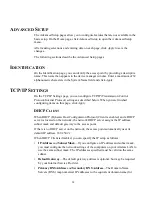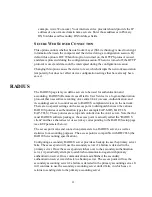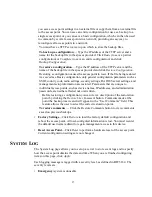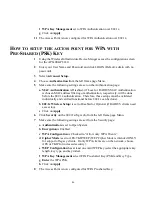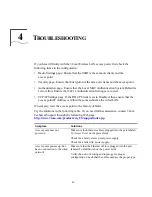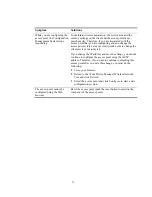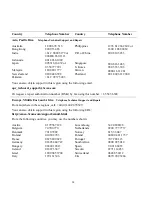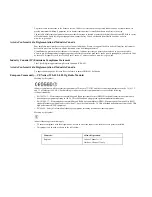
42
C
ONFIGURING
E
NCRYPTION
There are two types of data encryption available:
• WPA—Wi-Fi Protected Access.
• WEP—Wired Equivalent Privacy.
The access point and the wireless devices must have the same encryption settings
to communicate. You can choose to allow only clients using WPA encryption, or you
can allow both WPA and WEP clients.
The following sections describe how to configure each type of encryption. When you
are finished configuring the encryption, click
Apply.
WPA Configuration
To configure WPA encryption:
1
Under WPA Configuration, click the
Required
check box if you want to limit
access to clients using WPA encryption. If you also want to allow WEP clients, do
not check this box.
2
Select the Cipher Mode, which determines the method by which keys are
computed. WEP is the weakest Multicast Cipher Mode and is only provided for
support of legacy clients which do not fully support WPA. Clients associated with
WPA-TKIP will have unicast packets directed at them with corresponding
encryption keys. However, with WEP selected as the Cipher Mode, ALL multicast
traffic is sent out with WEP encryption. It is recommended to only select WEP as
the Cipher Mode if legacy client support is critical.
AES - Advanced Encryption Standard (Highest Security)
TKIP—(Temporal Key Integrity Protocol) provides per-packet key mixing, a
message integrity check and a re-keying mechanism
WEP—Provides standard WEP ciphering (Least Secure)
3
Select the type of WPA Key Management:
WPA authentication over 802.1x (More secure, but requires a RADIUS
authentication server setup. (
See WPA note below
)
WPA Pre-shared Key (PSK) (
see WPA note below
)
4
Select the Key Type:
Hexadecimal (0~9, A~F; for example, D7 0A 9C 7F E5)
Alphanumeric (0~9, A~F; for example 01234)
5
Enter the pre-shared key in the space provided if necessary.

